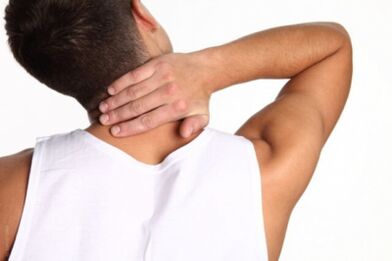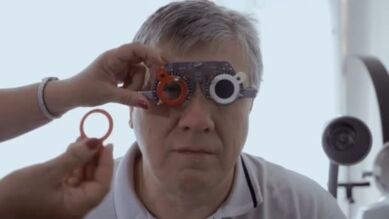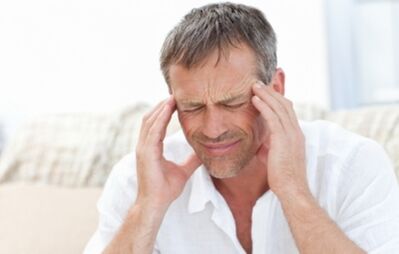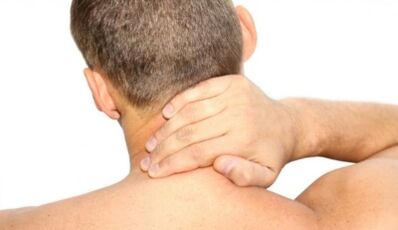Cervical osteochondrosis (COX) is diagnosed more frequently in women than in men. Still, their symptoms were nearly identical. But it's worth remembering that the course of each patient's disease occurs individually, regardless of gender.
Men are less aware of any tightening of the neck and symptoms of SHX are latent. This is due to the anatomy of people of different genders. Males are muscular and thus create extra protection for the discs. They created a shell that supports the vertebrae, preventing them from deforming.
The female spine is better at adapting to various stresses (related to fertility and fertility), but MCD symptoms are more frequent and more pronounced.
How does the spine relate to men's health?

As SHX fails, the brain receives less nutrients and blood vessels become blocked. Mostly, men complain of migraines and dizziness.man starts to worry:
- hypertension.
- The rhythm of coordination is disrupted, and there is instability in walking.
- Visual activity and acuity decreased.
- Hearing deterioration, often ringing in the ear.
- The voice became hoarse and rough, as if after being ill.
- More and more women are complaining about their men snoring.
symptom
all kinds of pain
Unpleasant sensations that start with strong movements in the neck area. They may be accompanied by frequent forced exhalation and sneezing. If the affected area is stretched by the wind or while diving into the ice cave, the unpleasant feeling can become strong. Men have difficulty turning their heads, and even a slight tilt can cause discomfort.
WOH most often occurs with spinal nerve root disease if there is also numbness or crunching of the middle fingers or toes.
upper limb weakness
Older men often complain of weak and numb bone tissue. Most of the time, it will appear on the arms or legs, especially at night or when the weather changes suddenly.
If nothing is done, muscle weakness can cause their numbness and atrophy. This is due to spinal cord disease. The latter is directly related to the development of spinal nerve root disease.
desensitization
Decreased tissue sensitivity due to blocked blood vessels or inflammation. The senses are disturbed, manifested as ossification, chills, the skin of the affected area becomes pale, it turns scarlet during the massage. For vascular problems, there is usually a worsening of increased blood flow.
Cracked neck and limited mobility

Crunchy movements in the neck area are not always indicative of a dangerous disease, suggesting a pathological process. It may be caused by a genetic predisposition. Mostly, it occurs due to increased load on the neck area. Another cause is muscle spasm or maximal relaxation that doesn't have time to respond to contractions.
Crunchy movements when the joint is hypermobilized. They can strengthen the back muscles with frequent and intense physical activity.
Often, crunchy movements in the neck area are accompanied by rapid turning of the head, which is indicative of the development of the disease:
- Articular cartilage dystrophy.
- Spiny growths along the bony tissue along the edges of the body.
- salt deposits.
- Displacement of the bone in the joint due to trauma.
- Displacement of the nucleus pulposus of the intervertebral disc with rupture of the annulus fibrosus.
- Spondylolisthesis.
- Cartilage deformities.
The spine loses its shock-absorbing function, doubles the friction and strength, and constricts. Because of this, the spine is physiologically lowered, which results in restricted motor activity during pelvic tilt or circular movements.
loss of coordination and dizziness
The problem develops with insufficient blood supply, which feeds the complex receptors of the vestibular analyzer.
Sudden urge to exhale forcefully or vomit. A person feels restrained in motion, his legs give way, the person is disoriented in space.
Blurred vision and hearing, numbness of the tongue

A man has a veil in his eyes, white spots like tiny flies. Over time, the image becomes clear and then cloudy, and this flash may occur after a few minutes and be constant. They may stop on their own after a while. Sometimes a person starts to get lost in time and space.
Hearing loss is also diagnosed.The man started ringing in his ears more and more and he heard noises. The sound often occurs in one ear and rarely in both ears at the same time. Sometimes men are bothered by the feeling of earplugs, itching from time to time.
sore throat
Experts call this symptom pharyngeal neck osteochondrosis. A man appeared to have a mucus plug in his throat, he spoke, had difficulty breathing, and he started coughing with allergies. Cork can cause sweating, which manifests as a sore throat. Mucous membranes, due to frequent dry cough, dryness, burning sensation, itching. After this, the typical sore throat begins and the voice becomes hoarse. If the underlying cause of this reaction is uncertain, it will only worsen over the years.
Heart tingling, chest pressure
Under certain circumstancesWith SOH, the tingling occurs in the shoulder or elbow area. In this case, a compressive movement of the chest area is diagnosed. The heart muscle or liver often tingles because blood flow is disturbed and the organ cannot get the necessary amount of nutrients the blood distributes.
Over time, due to SHOH, the heart begins to tingle and squeeze intensely and the heart rate increases.
redness of the skin
Because of SOC, neurological problems begin in the brain region that regulates its neuroendocrine activity and the body's homeostasis. This triggers chronic fatigue syndrome, where a person is constantly wanting to sleep, his mood changes frequently, and his skin turns scarlet.
Apart from,Neurology becomes cause of depression, one man haunted by panic attacksand unreasonable fear. The skin turns scarlet, then rapidly whites, pressure rises, and the heart beats faster.
In this condition, men have reduced sexual activity, difficulty urinating, and apathy toward food.
other signs

- sudden vasospasm. A person accidentally loses direction and "falls" in space. In this case, it must be placed on a hard surface and waited until the blood supply to the brain improves. After a few minutes, the man will come to his senses, but after that, he will feel tired and his head will start to hurt.
- Pain that affects the arm, shoulder, and neck area. It often occurs in the occipital lobe, which squeezes the man's head like a fringe.
- Increased upper chest tone. At night, the muscular corset is in good condition and affects tension.
- compressed nerve root. Symptoms may vary. It depends on the course, stage of the disease and the affected spine itself. For example, the fingers may be numb or quadriplegic.
- nerve root pain in the back of the head. This symptom is typical for representatives of the strong sex, inflammatory processes occur during the disease or the cervical nerves are irritated. Usually, this occurs during frostbite or increased pain in the occipital area.
This attack occurs suddenly in men and resembles an electric shock. This negative reaction lasts only a few minutes, and then the pain begins to subside. Neuralgia can occur up to 5 times a day. At the same time, the occipital lobe loses its sensitivity, and goose bumps appear.
diagnosis method
Before starting treatment, the patient must undergo a series of tests to identify the affected area.
Diagnostic techniques:
- MRI or CT.
- X-ray.
- Rheumatism test.
Which doctor should I contact?

If a person feels some of the symptoms that cause SOH, it is best to contact a specialist immediately. Which one to contact:
- therapist. They conduct preliminary inspections and give recommendations. If SOS symptoms are detected, the patient is referred to a specialist in a narrow field of work.
- Neurologist/Neurologist. WOH is a neurological disorder, so men should consult a neurologist (neuropathologist).
- Spinal Neurology Specialist. This specialist selects treatments and diagnoses the condition of the spine.
- physical therapist. He uses non-traditional healing methods to eliminate diseases, of which acupuncture is particularly prominent. This improves blood flow and relieves muscle spasms.
When do I need to contact an expert?
- Main symptoms with changes in visual and auditory activity.
- Pain that cannot be relieved by medication.
- Vasospasm leading to loss of consciousness.
Development and course of disease
- Grade 1 SHOH: Minor lesions in the fibrocartilaginous nucleus pulposus region. Excessive loads can cause dehydration of the core, which negatively affects the size of the disk and the formation of cracks.
- The second stage of SHOH: The height of the intervertebral disc drops rapidly and the spine begins to sag. This increases the mobility of the vertebrae.
- The third stage: the formation of intervertebral disc prolapse and herniation, which may be accompanied by the development of chronic spasm of the intervertebral joints.
treat

Treatment is complex, with intensive treatment lasting 30 to 90 days, depending on the stage of disease progression, and 12 months of supportive measures to consolidate results, as well as prevent recurrence.
Conservative treatment of the disease - taking drugs, performing complex gymnastics.Surgical intervention is only justified if there is no positive motivation,Disease progression.
folk remedies
Celery root is crushed and taken in proportions: 4 grams. The roots are poured into a liter of hot water. Infuse for a day and filter. 10 grams three times a day.
In folk remedies, self-massage or using a needle applicator can be very good.


















